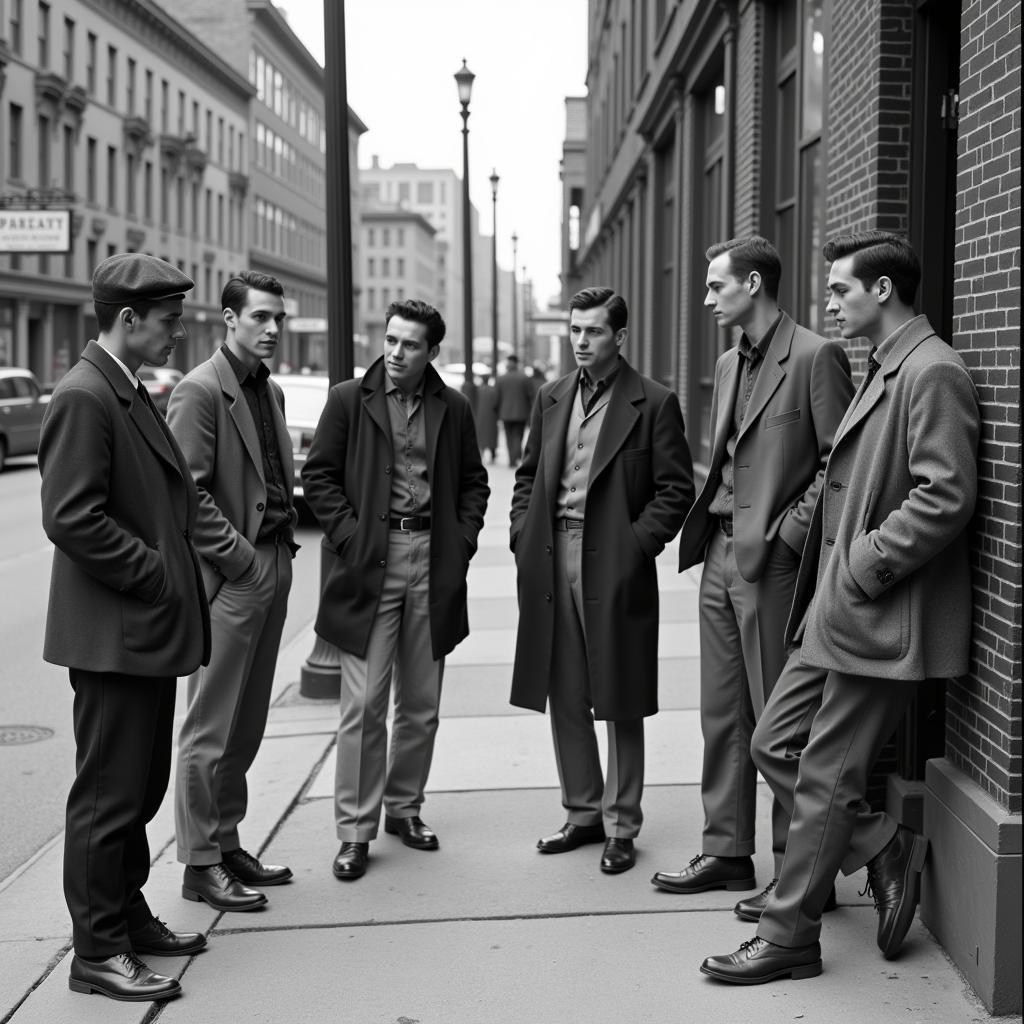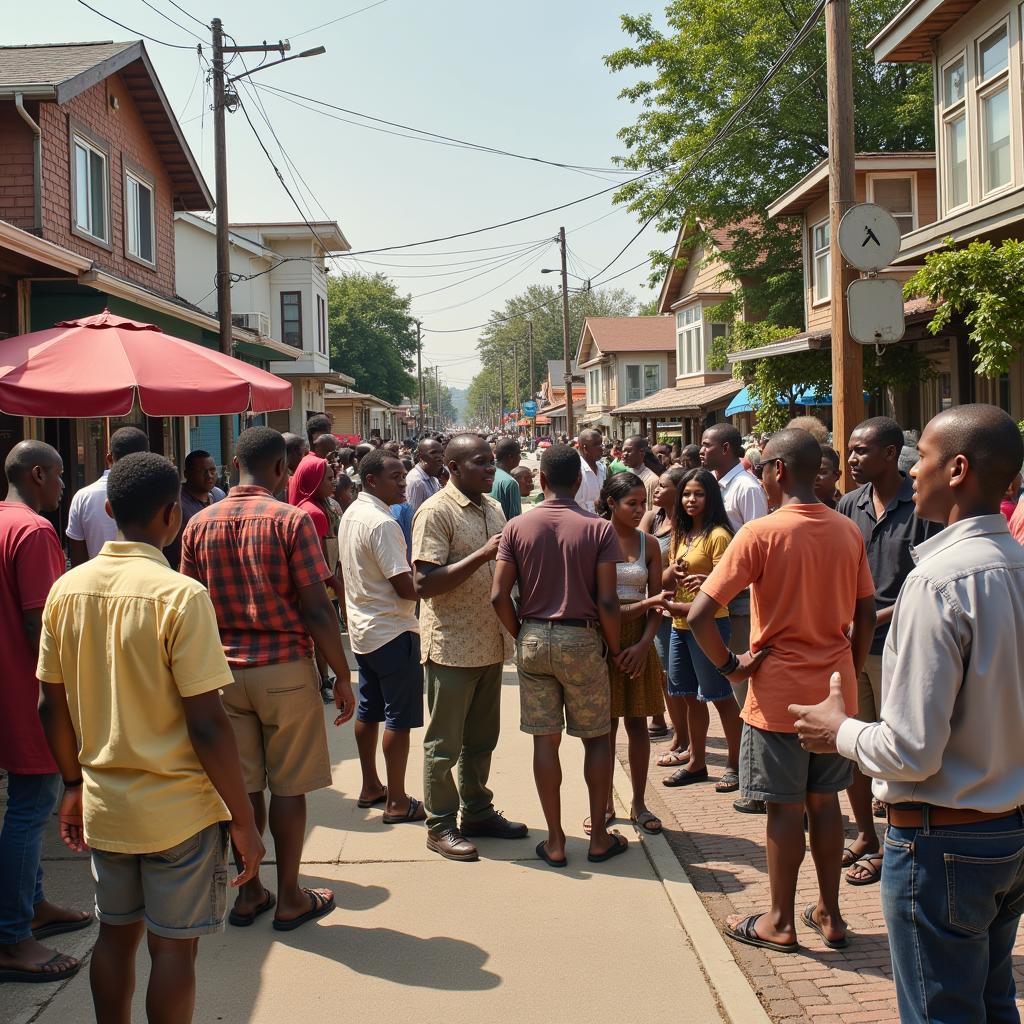Whyte Street Corner Society, a seminal work by William Foote Whyte, offers profound insights into the dynamics of community life. Published in 1943, this sociological study delves into the intricate social structures of an Italian-American neighborhood in Boston, known as “Cornerville,” in the late 1930s. More than just an academic text, Whyte’s work provides a valuable lens through which to examine social connections, leadership, and the complexities of community development, offering lessons relevant even today.
Whyte’s immersive approach, living within the community and participating in its daily life, allowed him to build trust and gain an unprecedented understanding of Cornerville’s social fabric. He meticulously documented the informal networks, hierarchies, and unwritten rules that governed the neighborhood, revealing the crucial role of social capital in navigating life’s challenges and opportunities. His work explores the “corner boys” and their social structure, highlighting the influence of group dynamics on individual behavior. This understanding can be instrumental in fostering peace and building bridges across cultural divides. For those interested in a deeper dive into Whyte’s work and its impact, you can learn more at street corner society william foote whyte.
Unveiling the Social Dynamics of Cornerville
Whyte’s meticulous observations revealed a distinct social hierarchy within Cornerville. He categorized the community members into “corner boys” and “college boys,” revealing the differing aspirations and opportunities available to each group. The corner boys, often lacking formal education and facing limited prospects, prioritized social bonds and loyalty within their tightly knit groups. Conversely, the college boys, pursuing higher education and professional careers, often struggled to integrate into the existing social structures. This study highlights the crucial role of social environment in shaping individual trajectories.
The Corner Boys: Loyalty and Brotherhood in Whyte Street Corner Society
The corner boys, the primary focus of Whyte Street Corner Society, operated within a complex system of social norms and expectations. Whyte identified Doc, the leader of the Norton Street Gang, as a pivotal figure in understanding the group’s dynamics. Doc’s leadership style, based on consensus-building and respect for individual opinions, fostered a strong sense of belonging and mutual support among the corner boys. This model of leadership provides a valuable example of how trust and collaboration can be cultivated within a community.
 Corner boys gathering in Whyte Street Corner Society
Corner boys gathering in Whyte Street Corner Society
Whyte Street Corner Society and its Relevance Today
The insights gleaned from Whyte Street Corner Society extend far beyond the confines of Cornerville. His work provides a framework for understanding the complexities of social interaction and community building in diverse contexts. The lessons learned from Doc’s leadership style, the importance of social capital, and the challenges of bridging cultural divides remain relevant in today’s increasingly interconnected world.
Applying Whyte’s Insights to Peacebuilding
By understanding the dynamics of community life revealed in Whyte Street Corner Society, we can develop more effective strategies for promoting peace and understanding across different cultures. Whyte’s emphasis on building relationships, fostering trust, and recognizing the importance of social networks offers valuable guidance for those seeking to bridge divides and create more inclusive communities. More information on related historical contexts can be found at the harvard historical society.
 Community building as depicted in Whyte Street Corner Society
Community building as depicted in Whyte Street Corner Society
The Enduring Legacy of Whyte’s Work
Whyte Street Corner Society continues to be a valuable resource for researchers, policymakers, and anyone interested in understanding the intricacies of community life. Its enduring legacy lies in its insightful portrayal of human interaction and its emphasis on the importance of building bridges across social divides. This understanding is crucial for building a more peaceful and just world. You can find more resources on this topic at street corner society.
Learning from the Past, Building for the Future
Whyte’s work challenges us to look beyond superficial differences and recognize the shared human experiences that connect us all. By learning from the past and applying these insights to the present, we can build stronger, more resilient communities and work towards a more peaceful future.
 The enduring legacy of Whyte Street Corner Society
The enduring legacy of Whyte Street Corner Society
Expert Insights:
-
Dr. Maria Rossi, Professor of Sociology: “Whyte Street Corner Society remains a cornerstone of sociological research, demonstrating the power of ethnographic studies in uncovering the hidden dynamics of community life.”
-
Dr. Anthony Lombardi, Community Development Specialist: “The principles of community building revealed in Whyte’s work are as relevant today as they were decades ago. Understanding the importance of social capital is crucial for fostering inclusive and resilient communities.”
-
Dr. Elena Moretti, Conflict Resolution Expert: “By recognizing the complexities of social interaction as depicted in Whyte Street Corner Society, we can develop more effective strategies for bridging cultural divides and promoting peaceful coexistence.”
Conclusion:
Whyte Street Corner Society remains a powerful testament to the importance of understanding community dynamics. By exploring the social structures of Cornerville, Whyte’s work provides valuable insights into the complexities of human interaction and offers a roadmap for building more cohesive and peaceful communities.
FAQ (Frequently Asked Questions):
- What is the main focus of Whyte Street Corner Society? The book focuses on the social structure and dynamics of an Italian-American community in Boston in the 1930s.
- Who are the “corner boys” in Whyte’s study? The corner boys are young men who spend their time on street corners, forming close-knit social groups.
- What is the significance of Doc in the Norton Street Gang? Doc is the leader of the gang, whose leadership style emphasizes consensus and respect.
- How does Whyte Street Corner Society contribute to peacebuilding? It provides insights into community dynamics that can be applied to building bridges across cultures and fostering understanding.
- What is social capital and why is it important? Social capital refers to the networks of relationships among people who live and work in a particular society, enabling that society to function effectively.
- How did Whyte conduct his research for this study? Whyte lived in the community he studied, participating in its daily life and building relationships with its members.
- What are some key takeaways from Whyte’s work? Key takeaways include the importance of social connections, the impact of leadership styles on group dynamics, and the complexities of community development.
Need further assistance? Contact us 24/7: Phone: 02043854663, Email: [email protected] or visit us at Zone 34, Bac Giang, 260000, Vietnam.